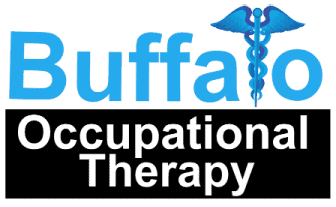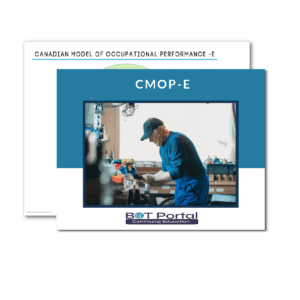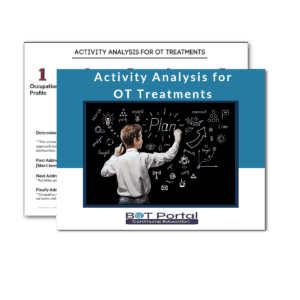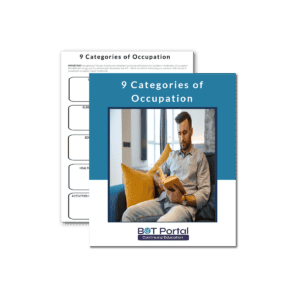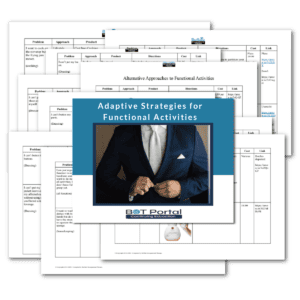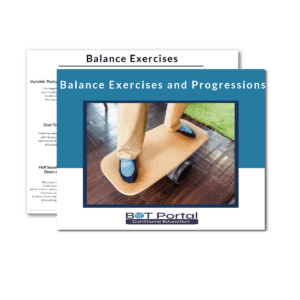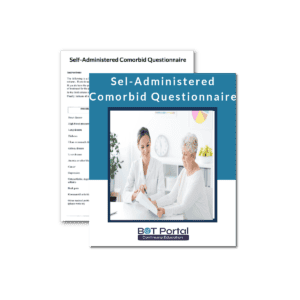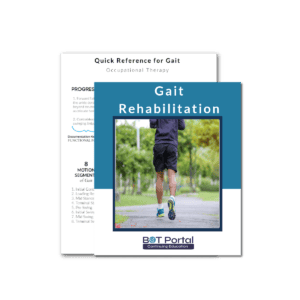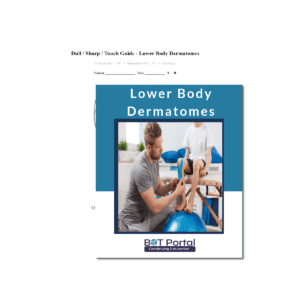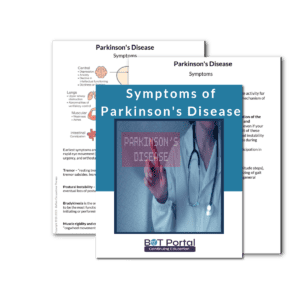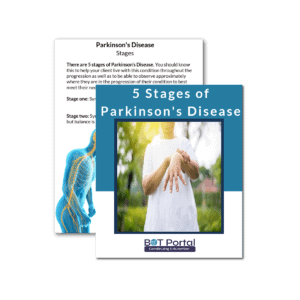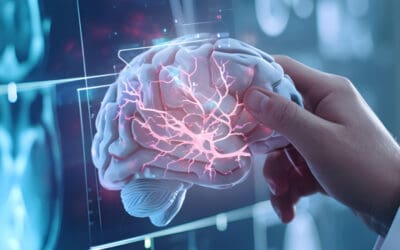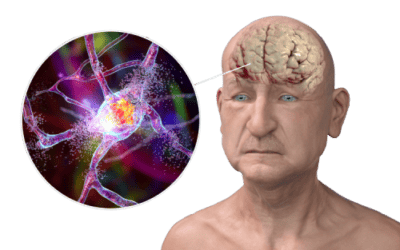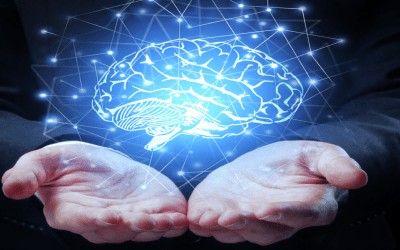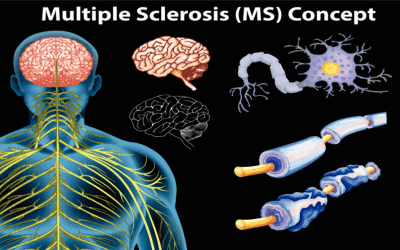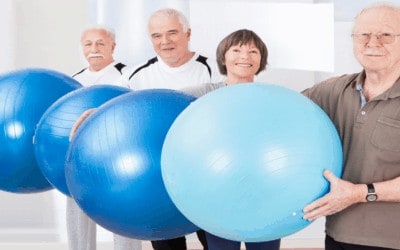Neuromuscular Re-Education (NMRE) Treatments for Occupational Therapy
Neuromuscular Re-Education in Occupational Therapy
Neuromuscular Re-education is a underlying skill in all occupational performance activities.
Stop feeling insecure and lost.
Don't wait for BURNOUT to consume your life because there just isn't enough time for professional development or searching for evidence-based information and training for daily clinical treatments.
Join the BOT Rehabilitation Resource Portal and Receive 24/7 access to the highest quality resources designed by an experienced therapist speciically for busy, motivated, and passionate therapists and therapy assistants.
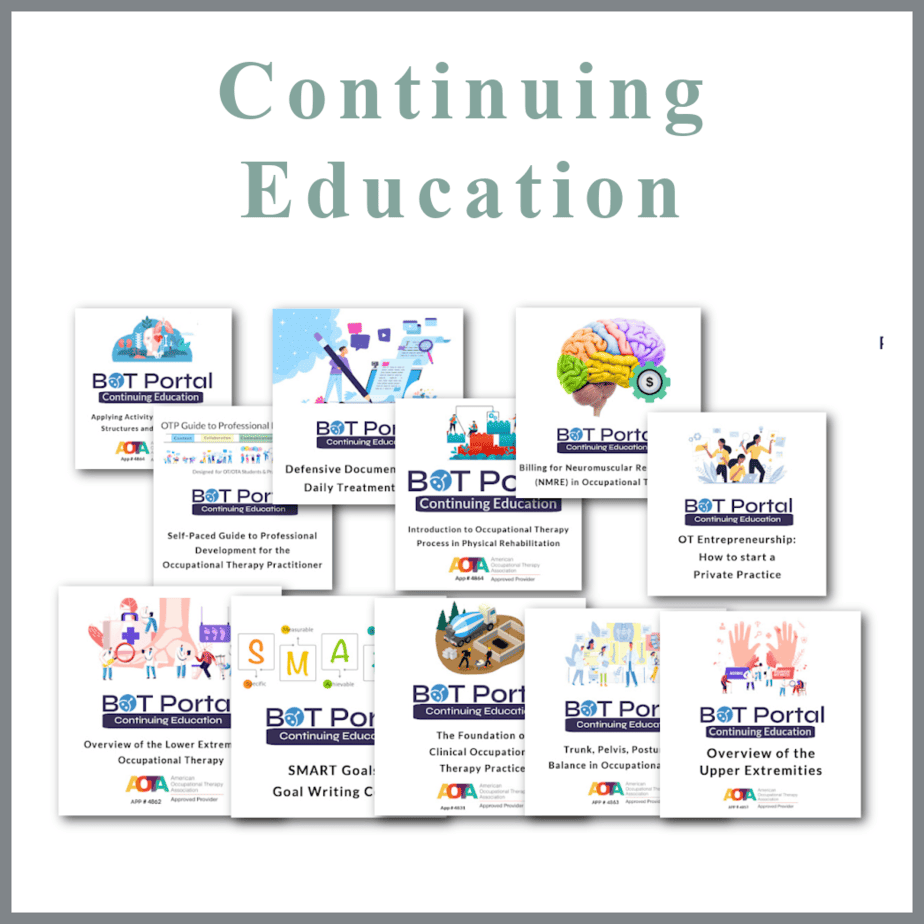
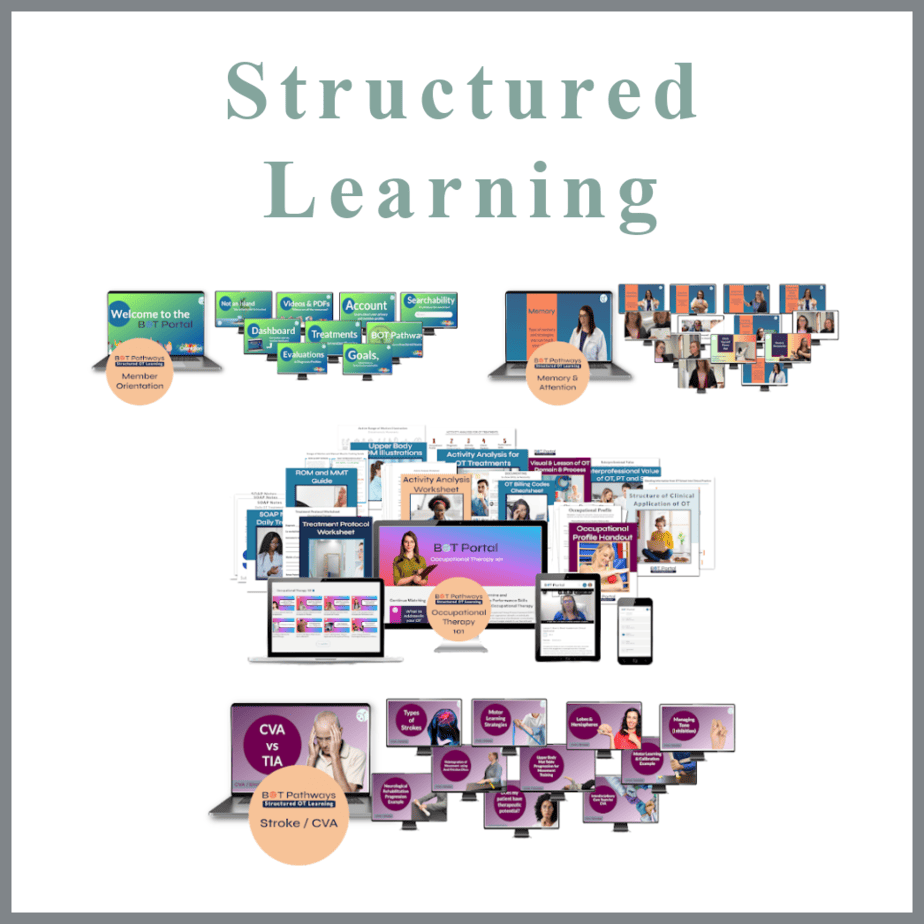
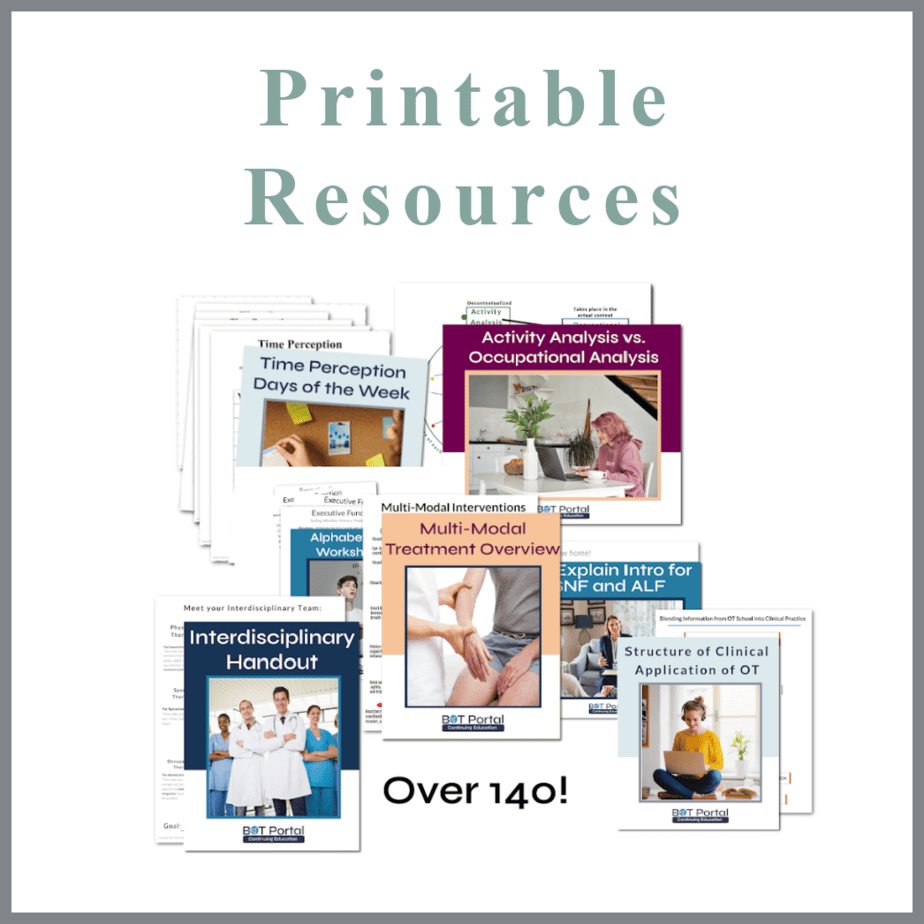
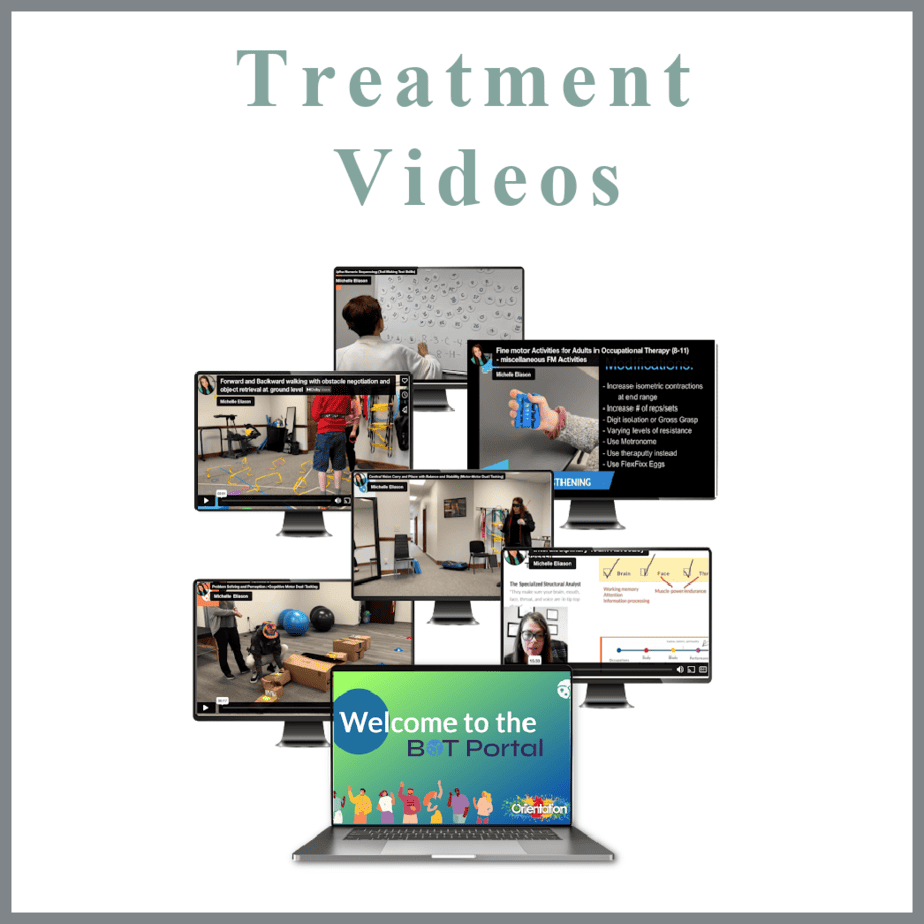
Membership Perks
What is included?
Your investment gives you resources to save you stress, self-doubt, and burnout as you become a confident and competent practitioner who can stand up for your professional point of view and scope of practice.
Neuromuscular Re-Education in Occupational Therapy
Neuromuscular Re-education is a underlying skill in all occupational performance activities.
Addressing Neuromuscular Re-Education (NMRE) is pivotal in occupational therapy practice, and contrary to common belief, it isn’t exclusive to patients with neurological diagnoses. Instead, NMRE serves as a fundamental code utilized by occupational therapy practitioners (OTPs) across various neurological-based models or frames of reference within their scope of practice. Whether employing neuromotor, neurobehavioral, neurocognitive, dual-tasking, neuromuscular, or Neurodevelopmental approaches, NMRE remains a cornerstone for promoting, restoring, or maintaining balance, coordination, kinesthetic sense, posture, and proprioception for sitting and standing activities.
Imagine a child with developmental delays struggling to maintain balance while sitting at a desk in school. By implementing NMRE interventions, occupational therapists can help the child improve core strength, coordination, and postural control, enabling them to sit upright and engage in learning activities more comfortably and effectively.
Similarly, consider an adult recovering from a lower limb injury who experiences difficulty maintaining balance while standing during household chores. Through NMRE techniques, occupational therapists can target specific muscle groups, enhance proprioceptive feedback, and improve overall stability, empowering the individual to perform daily tasks with increased confidence and safety.
Whether it’s a senior citizen aiming to prevent falls by improving balance and coordination or a stroke survivor working to regain functional independence in activities of daily living, NMRE interventions play a vital role in facilitating optimal occupational performance across the lifespan.
By addressing Neuromuscular Re-Education, occupational therapy practitioners equip individuals with the skills and abilities necessary to navigate their daily routines with greater ease, confidence, and independence. Through tailored interventions and evidence-based approaches, NMRE fosters improved balance, coordination, posture, and proprioception, ultimately enhancing the overall quality of life for clients across diverse populations and settings.
General:
Neuromuscular Re-education (NMRE) – 97112
This code does not require your patient to have a neurological-based diagnosis (this is a common mis-fact). Instead NMRE is a common code used by OTPs when applying one of the ten to twenty neurological-based models of practices or frames of reference they have within their scope whether that is neuromotor, neurobehavioral, neurocognitive, dual tasking, neuromuscular, Neurodevelopmental, etc. NMRE can apply to individuals across the lifespan when implementing interventions designed to promote, restore, or maintain balance, coordination, kinesthetic sense, posture, and/or proprioception for sitting and/or standing activities.
Assessments to use in Evaluation and Progress Notes:
- BERG Balance Assessment
- Timed Up and Go
- 5 Times Sit to Stand
- 10ft Tandem Line
- Modified Falls Efficacy Scale
- ABC Balance Scale
How should you approach Neuromuscular Re-Education Training in Occupational Therapy?
Explanation: An occupational therapy practitioner has a secret sauce to rehabilitation. What separates us from everyone else is that we use activity analysis for repair and we work in continuums! We are holistic practitioners who work in both the social and medical models which means we understand that there is a sequence that must be used for maximum recovery. What is the treatment continuum for balance in occupational therapy? How should you format your plan of care or treatment plans to help someone improve their balance for maximum occupational therapy performance? Well, first of all – be prepared for 6-12 weeks of work! Balance takes a long time to correct!!! An occupational therapy practitioner is required to improve the balance so much that the balance system is effective across any context his/her patient may find themselves. So, what’s the balance continuum of occupational therapy treatments?
- Postural Alignment Assessment and Gait Assessment
- Address muscle mal-alignments, imbalances, and generalized weakness
- Static sitting – supported (postural endurance and body mechanics)
- Static sitting – unsupported (postural endurance and body mechanics)
- Dynamic sitting activities / exercises — progress to multi-modal dynamic sitting activities
- Static standing
- Transitional movement efficiency and stability
- Dynamic standing activities requiring unilateral upper extremity involvement, one hand support
- Dynamic standing activities requiring bilateral upper extremity involvement
- Dynamic standing activities requiring extensive weight shift beyond base of support
- Dynamic standing activities requiring bilateral upper extremity involvement with reach outside or beyond base of support
- Gait Training
Browse the Resource Store!
Don't want to pay for each PDF individually? No problem! The BOT Portal Membership comes with all printable resources and more!
Alzheimer’s Disease Medications
Dementia Treatments Alzheimer's Disease MedicationIntroduction People are increasingly interested in the latest advancements in Alzheimer's disease medications as they seek to safeguard their brain health through the most cutting-edge scientific developments....
The Neurological Therapist – Interview your therapist
One crucial aspect of our practice is understanding the nuances between different treatment modalities and knowing when to apply each one effectively.
Understanding the Difference: Therapeutic Exercise, Therapeutic Activity, and Neuromuscular Re-education in Occupational Therapy
One crucial aspect of our practice is understanding the nuances between different treatment modalities and knowing when to apply each one effectively.
Stages of Alzheimer’s Disease
Alzheimer’s disease progresses through several stages, each presenting its own set of challenges for both the individual and their loved ones. In the early stages, memory lapses and difficulty with familiar tasks may be subtle, but as the disease advances, symptoms become more pronounced. In the middle stages, confusion and disorientation become more frequent, and individuals may require assistance with daily activities. Finally, in the late stages, communication becomes extremely limited, and round-the-clock care is often necessary. Understanding these stages can help families better navigate the journey of Alzheimer’s, providing support and planning for the road ahead.
Warning Signs of Dementia
It is difficult to tell the difference between memory loss in normal aging and warning signs of dementia, but there are several common findings that may serve as a warning sign that something deeper may be happening than normal aging.
Early Signs of Dementia in Women
“Memory is the treasure house of the mind wherein the monuments thereof are kept and preserved”. Thomas Fuller Early signs of dementia in women:Early: This refers to the beginning stages or the initial phase of something. In the context of "early signs of dementia,"...
Traumatic Brain Injury Rehabilitation
Traumatic Brain Injury Rehabilitation Authored by Michelle Eliason, MS, OTR/L, CKTS, C.D.S.What is a Traumatic Brain Injury (TBI)A traumatic brain injury (TBI) can occur after a fall, sport injury, motor vehicle accident, blunt force trauma, accident at work, or any...
Lewy Body Dementia and Rehabilitation
Lewy Body Dementia and Rehabilitation Authored by Michelle Eliason, MS, OTR/L, CKTS, C.D.S.What is Lewy Body Dementia?Lewy Body Dementia (LBD) is the second most prevalent progressive neurodegenerative diagnosis causing dementia. It is second to Alzheimer's disease...
Multiple Sclerosis and Rehabilitation
Multiple Sclerosis and Rehabilitation Authored by Michelle Eliason, MS, OTR/L, CKTS, C.D.S.Common Symptoms of Multiple SclerosisMultiple sclerosis (MS) is a neurodegenerative disease affecting the central nervous system (brain and spinal cord). During the progression...
Parkinson’s Disease
Parkinson's Disease Treatment Parkinson's Disease Therapy and Management Parkinson's Disease treatment; Parkinson's Disease therapy; PD; Parkinson's Physical TherapyCommon Symptoms of Parkinson's DiseaseParkinson's disease is the second most common neurodegenerative...
